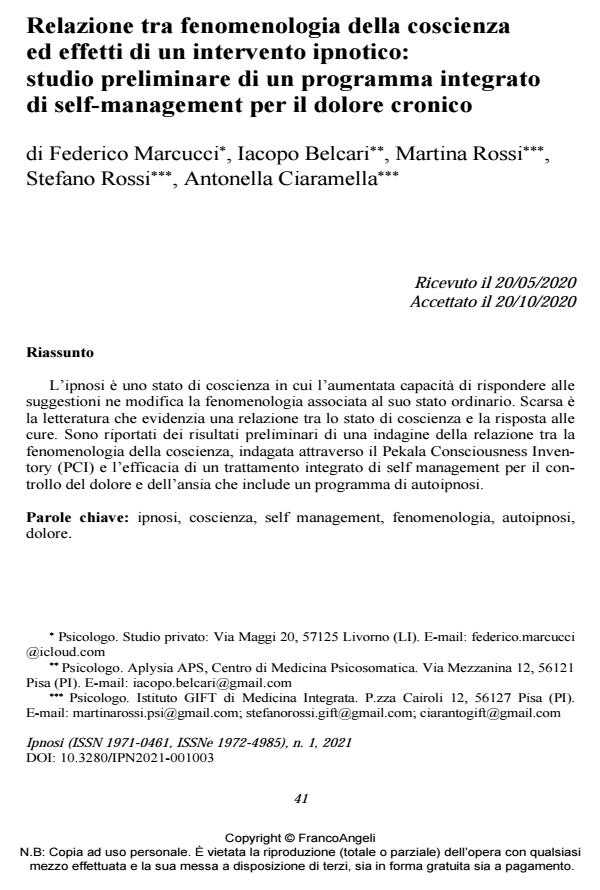Relationship between phenomenology of consciousness and effects of a hypnotic intervention: Preliminary study of a self-management program for chronic pain
Journal title IPNOSI
Author/s Federico Marcucci, Iacopo Belcari, Martina Rossi, Stefano Rossi, Antonella Ciaramella
Publishing Year 2021 Issue 2021/1
Language Italian Pages 14 P. 41-54 File size 225 KB
DOI 10.3280/IPN2021-001003
DOI is like a bar code for intellectual property: to have more infomation
click here
Below, you can see the article first page
If you want to buy this article in PDF format, you can do it, following the instructions to buy download credits

FrancoAngeli is member of Publishers International Linking Association, Inc (PILA), a not-for-profit association which run the CrossRef service enabling links to and from online scholarly content.
Hypnosis is a state of consciousness in which the increased ability to respond to suggestions modifies the phenomenology associated with its ordinary state. There is little literature that shows a relationship between the state of conscious-ness and the response to treatments. We report the preliminary results of an inves-tigation of the relationship between the phenomenology of consciousness, investi-gated through the Pekala Consciousness Inventory (PCI) and the efficacy of an integrated self-management treatment, that includes the self-hypnosis, for the con-trol of pain and anxiety.
Keywords: hypnosis, consciousness, self-management, phenomenology, self-hypnosis, pain.
Federico Marcucci, Iacopo Belcari, Martina Rossi, Stefano Rossi, Antonella Ciaramella, Relazione tra fenomenologia della coscienza ed effetti di un intervento ipnotico: studio preliminare di un programma integrato di self-management per il dolore cronico in "IPNOSI" 1/2021, pp 41-54, DOI: 10.3280/IPN2021-001003